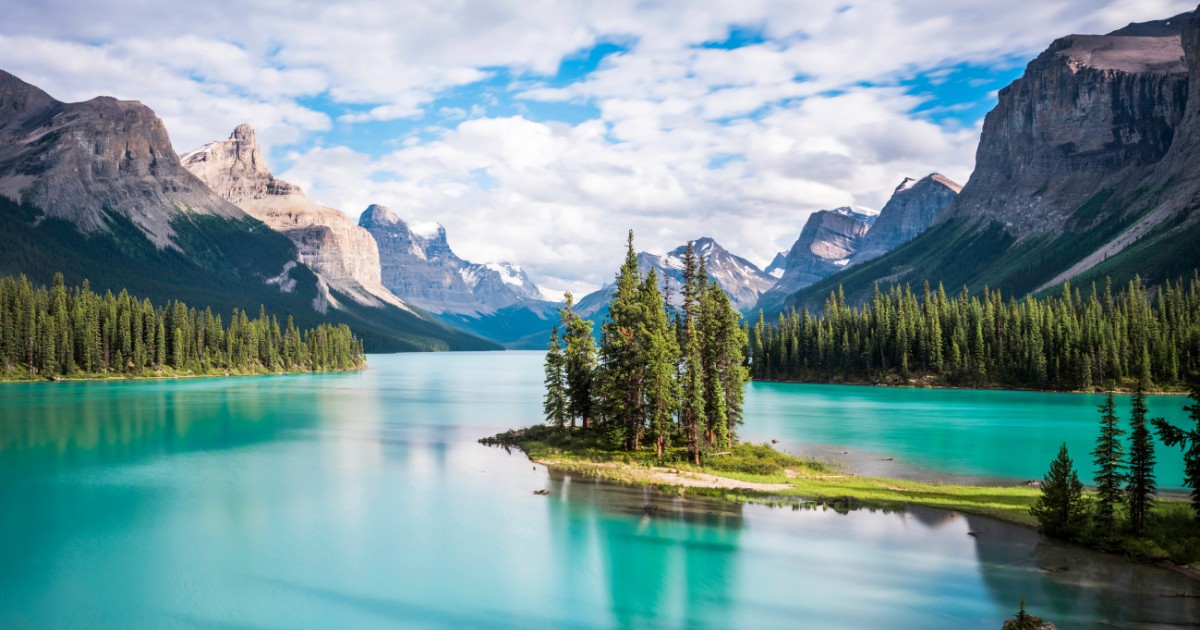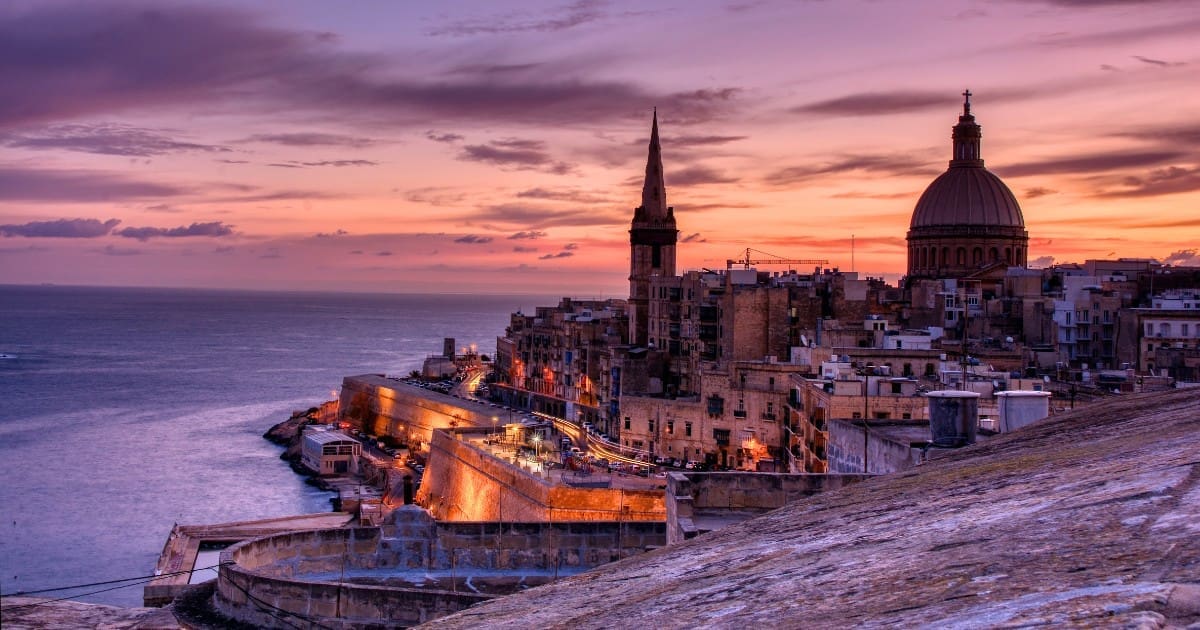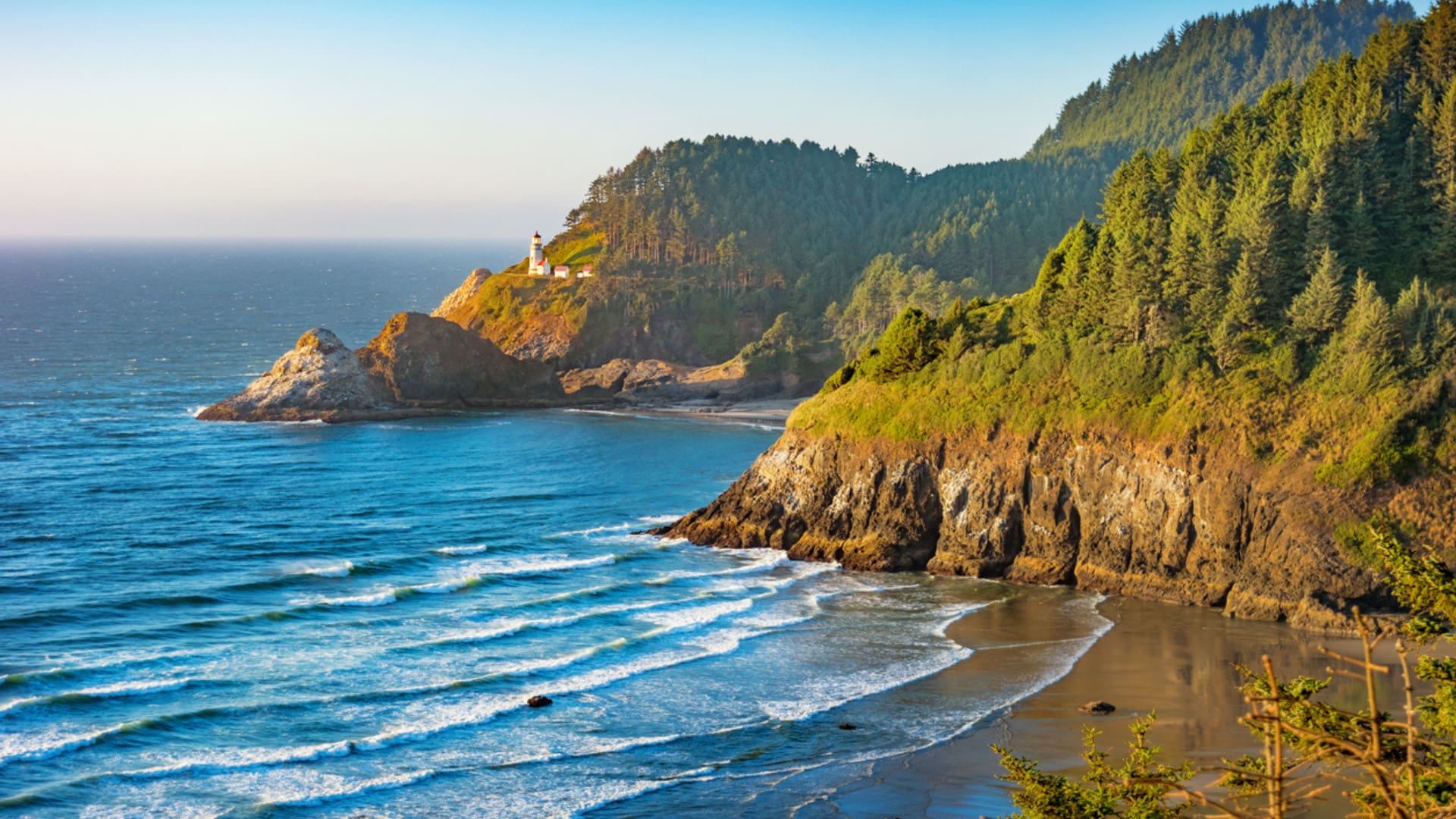Are you dreaming of setting foot on the mysterious and breathtaking continent at the bottom of the world? Well, guess what? You can totally make it happen! While figuring out how to get to Antarctica may seem impossible at first, it’s actually more accessible than you might think.
Why Visit Antarctica?
Imagine you’re standing on a vast, icy landscape, surrounded by towering glaciers, massive icebergs, and snow-covered mountains that seem to stretch on forever. Here are just a few reasons why Antarctica should be at the top of your travel destinations list:
- You’ll get to see glaciers and icebergs up close and personal.
- You can hang out with penguins, seals, and whales in their natural habitat.
- The colors of the polar landscape will blow your mind.
- You’ll learn about the cool history of exploration and science on the continent.
- It’s the perfect place to unplug from the modern world and connect with nature.
Is it Possible for Tourists to Go to Antarctica?
You bet it is! Even though Antarctica doesn’t have any permanent residents, it welcomes visitors during the austral summer (that’s October to March for us in the Northern Hemisphere). And there are a few different ways you can make the journey.
In fact, the International Association of Antarctica Tour Operators (IAATO) said that more than 105,331 people visited Antarctica from 2022–2023 alone. Those visitors came from all over the world, including the United States, China, Australia, Germany, Canada, the United Kingdom, France, and India, just to name a few.
3 Main Ways on How to Get to Antarctica
Alright, so here are the details on the three main ways to get to Antarctica. Check out this handy table for a quick overview of your options then I’ll break it down one by one as we move on:
| Method | Departure Point | Duration | Highlights |
|---|---|---|---|
| Cruise ship | Ushuaia, Argentina | 6-24 days | Drake Passage crossing, Antarctic Peninsula |
| Fly-cruise | Punta Arenas, Chile | 8 days | Fly over the Drake Passage, cruise the peninsula |
| Direct flight | Punta Arenas, Chile, or Cape Town, South Africa | 1-10 days | Land on the continent, visit remote locations |
1. By Cruise Ship from Ushuaia, Argentina
If you’re looking for the classic Antarctic experience, cruising from Ushuaia is the way to go. You’ll get to cross the legendary Drake Passage, which is an adventure in itself, and then spend your days exploring the stunning Antarctic Peninsula.
Why is Ushuaia the Most Popular Starting Point?
Ushuaia is known as the “End of the World,” and for good reason. It’s the southernmost city in Argentina, and it’s the perfect jumping-off point for Antarctic cruises. Here’s why:
- It’s the closest port to the Antarctic Peninsula, which means less time spent at sea and more time exploring the continent.
- It offers a wide variety of cruise options, departure dates, and itineraries so you can find the perfect trip to suit your needs and interests.
- The city itself is a charming and fascinating place, with a rich history and plenty of activities to enjoy before or after your cruise, like visiting Tierra del Fuego National Park or exploring the Beagle Channel.
What to Expect on a Cruise from Ushuaia to Antarctica?
Here’s what you can look forward to on your cruise from Ushuaia:
- Crossing the Drake Passage, which can be rough but is a rite of passage for Antarctic travelers (and if you’re lucky, you might even experience the “Drake Lake” instead of the “Drake Shake”!).
- Spotting seabirds, whales, and dolphins from the ship’s deck as you make your way south.
- Attending lectures and workshops led by expert guides and scientists who will share their knowledge and passion for Antarctica.
- Setting foot on the Antarctic Peninsula and exploring its stunning landscapes, from towering glaciers and ice-covered mountains to pristine bays and beaches.
- Cruising through ice-filled channels and bays in small Zodiac boats, getting up close and personal with the incredible scenery and wildlife.
- Visiting penguin rookeries and seal colonies, and maybe even spotting a whale or two breaching nearby.
2. By Fly-cruise Combination from Punta Arenas, Chile
If you’re short on time or just want to skip the Drake Passage crossing, a fly-cruise is a great option to get to Antarctica. You’ll fly from Punta Arenas to King George Island in Antarctica and then board your cruise ship to explore the peninsula.
How Does the Fly-cruise Option Work?
Here’s a step-by-step breakdown of what to expect on a fly-cruise:
- Fly from Punta Arenas to King George Island (about 2 hours) on a specially chartered plane, taking in views of the Andes Mountains and Antarctic Peninsula along the way.
- Board your cruise ship and set sail for the Antarctic Peninsula, where you’ll spend the next few days exploring the landscapes and wildlife.
- Enjoy all the same activities and experiences as a traditional Antarctic cruise, like Zodiac excursions, shore landings, and expert lectures and workshops.
- Fly back to Punta Arenas at the end of your trip with a newfound appreciation for the wonders of Antarctica.
It’s a seamless and efficient way to experience Antarctica without the potential seasickness of the Drake Passage.
What are the Advantages of Choosing a Fly-cruise Package?
Fly-cruises offer some pretty sweet perks, like:
- Saving time by skipping the Drake Passage crossing, which can take up to two days each way.
- Avoiding potential seasickness and discomfort on the rough seas of the Drake Passage.
- Spending more time actually exploring Antarctica since you’ll arrive at the peninsula faster and have more days to enjoy the scenery and wildlife.
- Having a wider range of itinerary options and durations, from as short as six days to as long as two weeks or more, depending on your preferences and schedule.
3. By Direct flights to Antarctica
For the ultimate in luxury and exclusivity, you can take a direct flight to Antarctica from Punta Arenas, Chile, or Cape Town, South Africa. These flights are operated by specialized companies and land on the continent’s ice runways.
| Departure Point | Flight Time | Landing Site | Trip Duration |
|---|---|---|---|
| Punta Arenas, Chile | 4 hours | Union Glacier Camp | 1-8 days |
| Cape Town, South Africa | 5-6 hours | Whichaway Camp | 8-12 days |
Flights from Punta Arenas, Chile
Flying from Punta Arenas is the most popular option for direct flights to Antarctica. You’ll land at Union Glacier Camp, a private base camp operated by Antarctic Logistics & Expeditions (ALE). From there, you can explore the surrounding area, visit the South Pole, or even go on a ski expedition.
There are two main types of flights from Punta Arenas:
- Wheeled aircraft: These are the most common type of flight, using a BAe 146 aircraft equipped with wheels to land on the blue ice runway at Union Glacier Camp. The flight takes about 4 hours and can carry up to 60 passengers.
- Ski-equipped aircraft: These flights use a smaller Twin Otter or Basler BT-67 aircraft equipped with skis to land on snow or ice. They are used for flights to more remote locations, like the South Pole or the Ellsworth Mountains.
Flights from Cape Town, South Africa
If you’re looking for an even more exclusive experience, you can fly from Cape Town to Antarctica on a private jet. You’ll land at Whichaway Camp in Queen Maud Land, a remote and rarely visited region of the continent. The flight takes 5-6 hours and can carry up to 12 passengers.
From Whichaway Camp, you can enjoy a variety of activities, like exploring ice caves, visiting Emperor Penguin colonies, and even going on a scenic flight to the South Pole. The camp itself is a luxury-tented camp with spacious and comfortable accommodations, gourmet meals, and even a sauna and library.
How Do You Get to Antarctica by Cruise Ship?
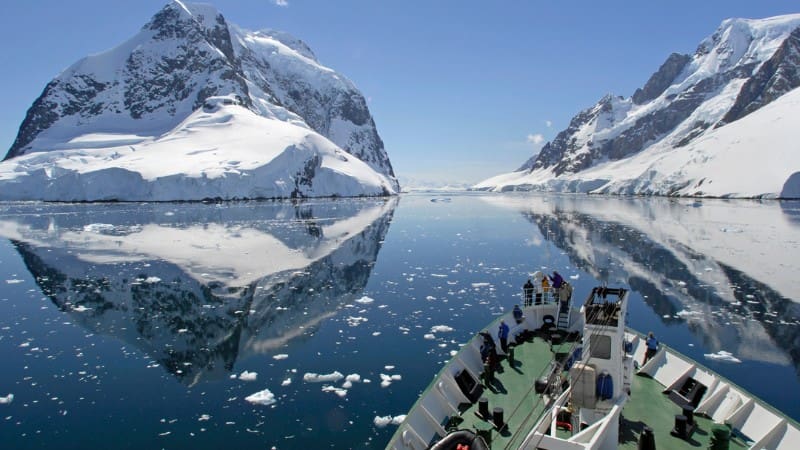
Cruising to Antarctica is the most popular and accessible way to visit the continent. But before you set sail, there are a few things to keep in mind.
- Choose your departure point (Ushuaia or Punta Arenas).
- Select your cruise itinerary and ship.
- Book your flights and pre-cruise accommodations.
- Pack your bags and get ready for the adventure of a lifetime!
By Sailing from Ushuaia, Argentina
As we mentioned earlier, Ushuaia is the most popular departure point for Antarctic cruises. Here’s what you need to know about getting there and setting sail.
How to Get to Ushuaia from Buenos Aires if You’re Going to Antarctica?
To get to Ushuaia, you’ll first need to fly to Buenos Aires, the capital of Argentina. From there, you can take a domestic flight to Ushuaia (about 3.5 hours).
Most cruise lines offer pre-cruise hotel packages and airport transfers, so be sure to ask about those when you book your trip.
There are daily direct flights from several major cities in North America, Europe, and Australia to Buenos Aires, including:
- New York (10-11 hours)
- Miami (8-9 hours)
- London (13-14 hours)
- Sydney (15-16 hours)
Once you arrive in Buenos Aires, you can enjoy a day or two exploring the city before heading to Ushuaia. Some popular activities include:
- Visiting the colorful La Boca neighborhood and its famous Caminito street.
- Taking a tango lesson or watching a tango show.
- Exploring the historic Recoleta Cemetery, where Eva Perón is buried.
- Enjoying a traditional Argentine steak dinner at a local parrilla (steakhouse).
Exploring Ushuaia Before Your Antarctic Cruise
Ushuaia is a charming city with plenty to see and do before your cruise. Some must-visit spots include:
- Tierra del Fuego National Park, where you can hike through landscapes and spot local wildlife like guanacos and foxes.
- The End of the World Museum which showcases the history and culture of Tierra del Fuego and the Antarctic region.
- The Beagle Channel, where you can take a boat tour to see sea lions, cormorants, and even penguins.
- The Martial Glacier which offers breathtaking views of the city and the surrounding mountains.
You can also enjoy some delicious seafood, shop for souvenirs, and soak up the adventure-town atmosphere before setting sail for Antarctica.
By Crossing the Drake Passage
The Drake Passage is the body of water that separates South America from Antarctica, and crossing it is an unforgettable experience which also gets you to Antarctica.
What is the Drake Passage?
The Drake Passage is known for its rough seas and stormy weather, but don’t let that scare you off. The passage is about 600 miles wide and takes about 2 days to cross, depending on the weather.
The passage is named after the English explorer Sir Francis Drake, who was the first to sail through it in the 16th century. It’s also known as the “roaring forties” and “furious fifties” because of the strong winds and high waves that are common in the area.
How long does it take to cross the Drake Passage?
Most cruises take about 48 hours to cross the Drake Passage, but it can vary depending on the conditions. During the crossing, you’ll have plenty of time to attend lectures, watch for seabirds and whales, and get to know your fellow passengers.
Some of the wildlife you might spot during the crossing include:
- Albatrosses, including the wandering albatross, which has the largest wingspan of any bird in the world.
- Petrels, including the giant petrel and the cape petrel.
- Whales, including fin whales, humpback whales, and even the occasional blue whale.
- Dolphins, including Peale’s dolphins and Commerson’s dolphins.
How to Choose the Right Cruise Ship When Going to Antarctica?
There are lots of different cruise ships to choose from when it comes to Antarctic travel, from small expedition vessels to larger luxury liners. Here are a few things to consider when making your choice:
Small Expedition Ships vs. Larger Cruise Vessels
Smaller expedition ships (100-200 passengers) going to Antarctica offer a more intimate and immersive experience, with more opportunities for shore landings and activities. They can also navigate smaller channels and bays that larger ships can’t access. However, they may have fewer amenities and less stable rides in rough seas.
Antarctica’s larger expedition ships (500+ passengers) offer more amenities and stability, but may have limited access to certain areas due to their size. They also tend to have less flexibility in their itineraries and may not be able to offer as many shore excursions or activities.
What are the Amenities and Activities on Board Antarctic Cruise Ships?
No matter which ship you choose, you can expect top-notch amenities and activities, like:
- Comfortable cabins with ocean views and en-suite bathrooms.
- Gourmet dining and bar service, often with regional specialties and wine pairings.
- Lecture halls and libraries where you can learn about the history, geology, and wildlife of Antarctica from expert guides and scientists.
- Fitness centers and spa facilities to help you stay active and relaxed during your journey.
- Outdoor decks and observation lounges where you can take in the stunning scenery and watch for wildlife.
- Zodiac boats for shore excursions and cruising among the icebergs and glaciers.
- Kayaking, snowshoeing, camping, and other adventure activities (depending on the ship and itinerary).
Some ships even offer helicopter or submarine excursions for an extra cost, giving you a unique perspective on the Antarctic landscape and wildlife.
What is the Fly-cruise Option to Reach Antarctica?
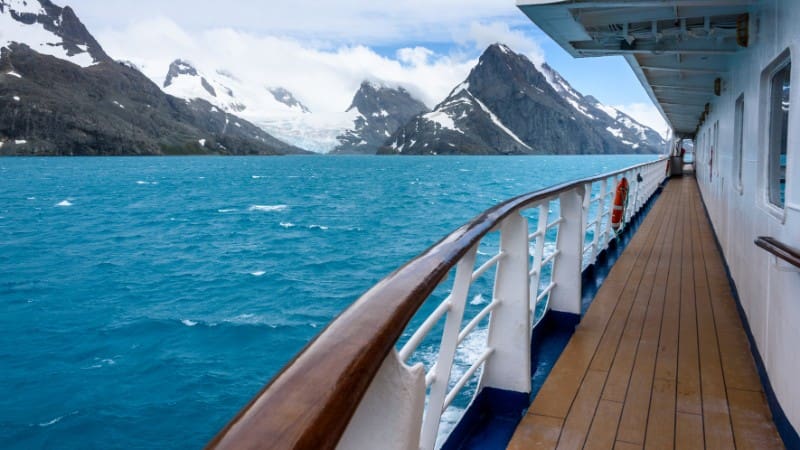
If you want to maximize your time in Antarctica and skip the Drake Passage crossing, a fly-cruise is the way to go. Here’s what you need to know.
Flying from Punta Arenas to King George Island
The fly-cruise option starts with a flight from Punta Arenas, Chile, to King George Island in the South Shetland Islands. The flight takes about 2 hours and lands on a gravel runway at the Chilean Frei Station.
How to Get to Punta Arenas from Santiago, Chile?
To get to Punta Arenas, you’ll first need to fly to Santiago, the capital of Chile. From there, you can take a domestic flight to Punta Arenas (about 3.5 hours).
Most fly-cruise packages include airport transfers and pre-flight accommodations in Punta Arenas. There are daily direct flights from several major cities in North America, Europe, and Australia to Santiago, including:
- Los Angeles (11-12 hours)
- New York (10-11 hours)
- London (14-15 hours)
- Sydney (13-14 hours)
Once you arrive in Santiago, you can spend a day or two exploring the city before heading to Punta Arenas. Some popular activities include:
- Visiting the historic center and Plaza de Armas.
- Taking a cable car to the top of San Cristobal Hill for panoramic views of the city.
- Exploring the colorful Bellavista neighborhood, known for its street art and nightlife.
- Enjoying a traditional Chilean meal, like pastel de choclo (corn pie) or empanadas.
The Flight from Punta Arenas to King George Island
The flight from Punta Arenas to King George Island is operated by a specialized airline called Aerovías DAP. The plane is a BAe 146, which is a high-wing aircraft designed for short runways and tough conditions.
During the flight, you’ll get amazing views of the Andes Mountains, the Patagonian fjords, and the Antarctic Peninsula. You might even spot some whales or icebergs in the air!
The flight lands at the Chilean Frei Station on King George Island, which is the largest of the South Shetland Islands. The station is a small research base with a gravel runway and a few buildings, including a small museum and gift shop.
Boarding your Cruise Ship in Antarctica
Once you land on King George Island, you’ll be transferred to your cruise ship by Zodiac boat. The transfer takes about 10-15 minutes, and you’ll get your first taste of Antarctic adventure as you zip across the icy waters.
Exploring the Antarctic Peninsula
With a fly-cruise, you’ll have more time to explore the Antarctic Peninsula and its landscapes, wildlife, and historic sites. Some highlights include:
- Visiting penguin rookeries and seal colonies.
- Cruising through ice-filled channels and bays in small Zodiac boats.
- Hiking on the Antarctic tundra.
- Kayaking or paddleboarding among the icebergs.
- Visiting scientific research stations and historic huts.
Comparing Fly-cruise Itineraries and Durations
Fly-cruise itineraries can range from 6 to 16 days, depending on the cruise line and the specific route. Some focus on the Antarctic Peninsula, while others include visits to the Falkland Islands and South Georgia Island.
When choosing a fly-cruise, think about your budget, time limits, and what you really want to see and do.
Do you want to see lots of wildlife, explore the landscape, or learn about the history? Do you want a relaxed or active pace? There’s a fly-cruise option for everyone.
Can You Fly Directly to Antarctica?
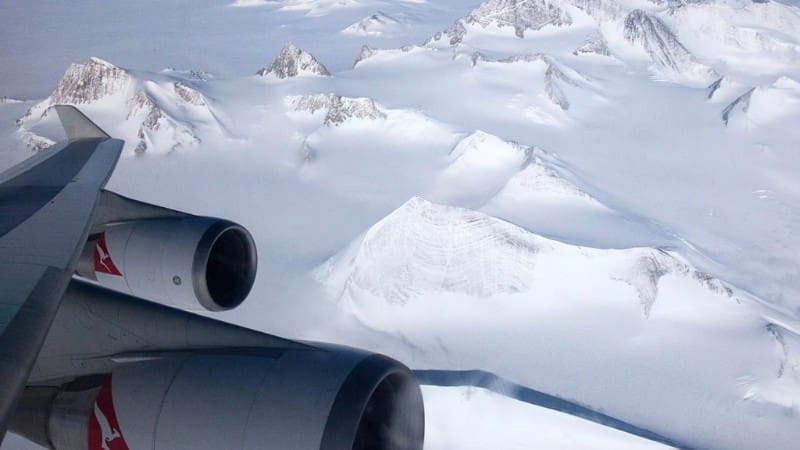
Yes, you can! But it’s not as easy as booking a regular flight. Direct flights to Antarctica are run by special companies and are usually part of a bigger trip package.
By Charter Flights from Punta Arenas, Chile
The most common way to fly straight to Antarctica is on a charter flight from Punta Arenas, Chile. These flights are operated by Antarctic Logistics & Expeditions (ALE), a company that provides support for private expeditions and research projects.
Landing on Union Glacier Camp
The flights from Punta Arenas land on a blue-ice runway at Union Glacier Camp, a private base camp run by ALE. The camp is located in the Ellsworth Mountains, about 1,000 miles from the South Pole.
Union Glacier Camp has everything you need, like places to sleep, eat, and have fun. It’s also the starting point for lots of cool trips and activities, like skiing, climbing, and sightseeing flights.
Visiting the South Pole and other remote locations
From Union Glacier Camp, you can take a ski-equipped plane to the South Pole, where you can visit the Amundsen-Scott South Pole Station and stand at the very bottom of the world.
You can also take a sightseeing flight to other faraway places, like the Transantarctic Mountains or the Weddell Sea.
These trips aren’t for everyone (you need to be brave and have a big budget!), but they’re a once-in-a-lifetime chance for adventurous travelers.
By Flights from Cape Town, South Africa
Another option for flying directly to Antarctica is on a private jet from Cape Town, South Africa. These flights are run by White Desert, a luxury travel company that offers special Antarctic trips.
Short-Day Trips and Longer Expeditions
White Desert has both short day trips and longer expeditions to Antarctica, depending on what you want to do and how much you want to spend. The day trips include a flight to Wolf’s Fang Runway, a visit to a nearby penguin colony, and a fancy picnic on the ice.
The longer trips can last 4 to 8 days and include things like ice climbing, visiting Emperor penguin colonies, and taking scenic flights. You can also choose a more relaxed trip with hikes, sightseeing, and plenty of time to enjoy the amazing views.
Staying in a Luxury Tented Camp in Queen Maud Land
White Desert’s top offering is a stay at Whichaway Camp, a luxury camp in Queen Maud Land. The camp has six heated sleeping pods, a shared lounge and dining area, and even a sauna!
From the camp, you can explore ice caves, visit a Russian research station, or just relax and take in the incredible Antarctic landscape. It’s a really special and luxurious way to experience the continent.
What are the Less Common Routes to Antarctica?
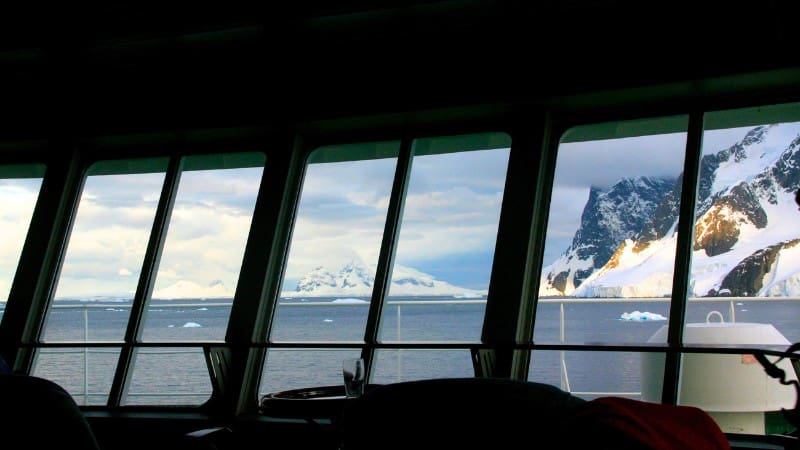
While most Antarctic trips start from South America, there are a few other routes that offer unique experiences and views of the continent.
By Cruises from Australia and New Zealand
A handful of expedition cruises leave from Australia and New Zealand each year, giving you a chance to explore the remote Ross Sea region of Antarctica.
Departing from Hobart, Australia or Invercargill, New Zealand
These cruises usually depart from Hobart, Australia, or Invercargill, New Zealand, and cross the Southern Ocean to reach the Ross Sea. The journey takes about a week each way, with stops at subantarctic islands like Macquarie Island and Campbell Island along the way.
Exploring the Ross Sea Region and Historic Expedition Sites
The Ross Sea is known for its stunning landscapes, including the massive Ross Ice Shelf, the Transantarctic Mountains, and Mount Erebus (an active volcano). It’s also home to large colonies of Emperor and Adelie penguins, as well as historic sites from early Antarctic expeditions.
Some highlights of a Ross Sea cruise include:
- Visiting the huts of explorers like Robert Falcon Scott and Ernest Shackleton.
- Cruising through the pack ice and spotting seals and whales.
- Taking helicopter flights over the Dry Valleys and other remote areas.
- Visiting scientific research stations like McMurdo and Scott Base.
By Voyages from South Africa
Another less common route to Antarctica is from Cape Town, South Africa, which offers access to the remote eastern side of the continent.
Visiting the Remote Eastern Side of Antarctica
Voyages from South Africa typically focus on the Weddell Sea and the Queen Maud Land coast, which are known for their massive tabular icebergs, ice shelves, and Emperor penguin colonies.
Some expeditions also include visits to subantarctic islands like South Georgia and the South Sandwich Islands.
Potential Wildlife Encounters and Unique Landscapes
The eastern side of Antarctica is home to some really cool and rare wildlife, like Emperor penguins (the biggest penguin species), leopard seals, killer whales, and special kinds of birds.
The landscapes are also incredibly beautiful, with huge ice cliffs, vast ice shelves, and deep blue icebergs. It’s a truly wild and untouched part of the world that very few travelers get to see.
How to Choose the Best Antarctic Travel Option for You?

With so many different ways to visit Antarctica, it can be hard to pick the best one for you. Here are a few important things to think about when making your choice.
Consider Your Budget and Time Constraints
Traveling to Antarctica isn’t cheap, no matter which option you choose. But some options cost more than others, so it’s important to know your budget before you start planning.
You’ll also need to think about how much time you have for the trip. Cruises from South America usually last 10 to 21 days, while fly-cruise options can be as short as 6 days. Direct flights and expeditions can vary a lot in length, too.
Decide Between a Cruise, Fly-cruise, or Direct Flight
Each travel option offers a different mix of cost, convenience, and how much time you get to spend in Antarctica. Here’s a quick rundown:
- Cruises offer the most immersive experience, with lots of time to explore the Antarctic Peninsula and nearby islands. They’re also the most affordable option (relatively speaking).
- Fly-cruises are a good middle ground between cost and convenience, with a shorter overall trip and the ability to skip the Drake Passage crossing.
- Direct flights and expeditions are the most exclusive and expensive options, but they let you access remote areas and have unique experiences.
Ultimately, the best option for you will depend on your personal preferences and priorities.
Research and Compare Different Tour Operators
Once you’ve decided on a general travel option, it’s time to start looking into specific tour operators and itineraries. Here are a few key things to look for:
Look for Experienced and Reputable Companies
When it comes to Antarctic travel, experience and reputation matter a lot. Look for companies that have been operating in the region for many years and have a good track record of safety and customer satisfaction.
Some well-known and respected Antarctic tour operators include:
- Quark Expeditions
- Lindblad Expeditions
- Hurtigruten
- Silversea Cruises
- Oceanwide Expeditions
But there are lots of other great options too, so be sure to do your research and compare different companies before booking.
Read Reviews and Testimonials from Previous Travelers
One of the best ways to get a feel for what to expect from a particular tour operator or itinerary is to read reviews and testimonials from people who have done the trip before.
Look for detailed, honest reviews that talk about the overall experience, the quality of the accommodations and food, how knowledgeable and helpful the guides were, and any challenges or issues that came up during the trip.
Keep in mind that everyone has different expectations and preferences, so take reviews with a grain of salt. But if you see a pattern of positive or negative feedback, it can be a helpful sign of what to expect.
When is the Best Time to Visit Antarctica?
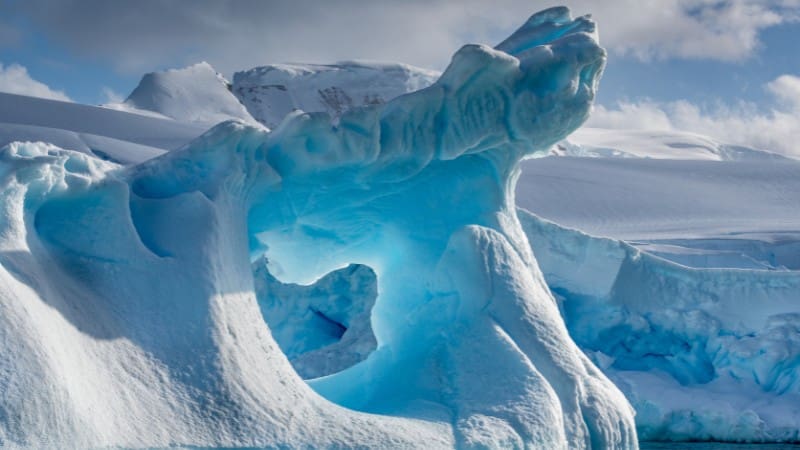
The Antarctic travel season runs from late October to early March, which is summertime in the Southern Hemisphere. But within that period, there are some key differences in weather, wildlife, and overall experience.
The Antarctic Travel Season: October to March
Here’s a quick overview of what to expect during each month of the season:
- October and November: The early season, when the ice is still thick and the weather can be unpredictable. But this is also a great time to see penguins and seals building their nests and giving birth to their young.
- December and January: The peak of the summer, with warmer temperatures, longer days, and the most wildlife activity. This is the best time to see penguin chicks and whale sightings.
- February and March: The late season, when the ice starts to break up and the wildlife begins to disperse. But this is also a great time to see whales and other marine mammals, as well as stunning sunsets and southern lights.
Best Months for Specific Activities and Wildlife Sightings
If you have specific goals or interests for your Antarctic trip, you may want to time your visit accordingly. Here are some key things to keep in mind:
Penguin Spotting: Late December to Early January
If seeing penguins is your top priority, aim for a trip in late December or early January. This is when the penguin chicks are hatching and the colonies are at their busiest and most crowded.
Some of the best places to see penguins in Antarctica include:
- South Shetland Islands (chinstrap, gentoo, and Adelie penguins)
- Antarctic Peninsula (gentoo, chinstrap, and Adelie penguins)
- Falkland Islands (rockhopper, gentoo, king, and Magellanic penguins)
- South Georgia Island (king penguins)
Whale Watching: February to March
If you’re hoping to see whales, plan your trip for February or March. This is when the whales are most active and easy to spot, as they feed on krill before heading north for the winter.
Some of the best places to see whales in Antarctica include:
- Antarctic Peninsula (humpback, minke, and orca whales)
- South Georgia Island (southern right whales)
- Ross Sea (orca and minke whales)
Of course, wildlife sightings are never guaranteed, and every trip is different. But by planning your visit carefully and choosing a good tour operator, you can increase your chances of seeing the animals and landscapes that interest you most.
How Much Does a Trip to Antarctica Cost?
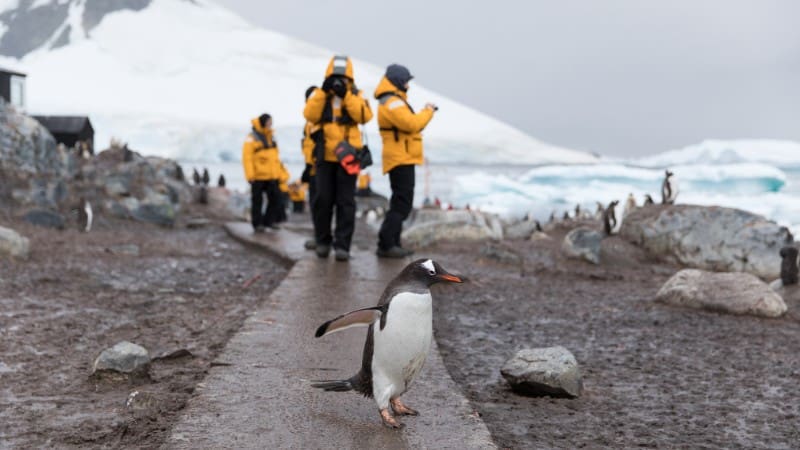
There’s no sugarcoating it: visiting Antarctica is expensive. But the cost can vary a lot depending on your travel style, itinerary, and other factors. Here’s a general idea of what you can expect to pay.
Factors that Influence the Cost of an Antarctic Voyage
Some of the key things that affect the cost of an Antarctic trip include:
- Where you start from and how you get there (cruise, fly-cruise, or direct flight)
- How long the trip is and what specific places you visit (Antarctic Peninsula, Falklands and South Georgia, Ross Sea, etc.)
- What kind of accommodations you have (shared cabin, private cabin, luxury suite, etc.)
- What activities and amenities are included (shore excursions, photography workshops, kayaking, etc.)
- What time of year you go and how popular that date is
In general, you can expect to pay anywhere from $5,000 to $50,000 or more per person for an Antarctic trip, depending on these factors.
Budget-friendly Options and Luxury Travel Packages
If you’re looking to keep costs down, your best bet is to choose a shorter cruise itinerary leaving from Ushuaia during the shoulder season (October, November, March). You can also look for last-minute deals or discounts, but these can be hard to find.
On the other end of the spectrum, luxury travel packages can include private charter flights, gourmet food, and super exclusive accommodations and activities. These trips can cost $100,000 or more per person, but they offer the ultimate in comfort and access.
Additional Expenses to Consider (e.g., Flights, Gear, Insurance)
In addition to the cost of the trip itself, there are some other expenses to keep in mind when planning your Antarctic adventure:
- Round-trip flights to your departure city (e.g., Buenos Aires, Santiago, Cape Town)
- Hotels and meals before and after your trip
- Special gear and clothing (e.g., parka, boots, waterproof pants)
- Travel insurance (including emergency medical evacuation coverage)
- Optional activities and excursions (e.g., kayaking, camping, photography workshops)
- Tips for the ship’s crew and expedition staff
These extra costs can add up quickly, so be sure to factor them into your overall budget when planning your trip.
Final Thoughts
As you can see, there are many different ways how to get to Antarctica, each with its own special benefits and challenges. The key is to do your research, choose a good tour operator, and plan ahead to make sure you have the best possible experience.
And remember, a trip to Antarctica isn’t just a vacation—it’s a chance to see the raw beauty and power of nature, learn about the delicate ecosystems and incredible wildlife that call this continent home, and challenge yourself in new and exciting ways.



